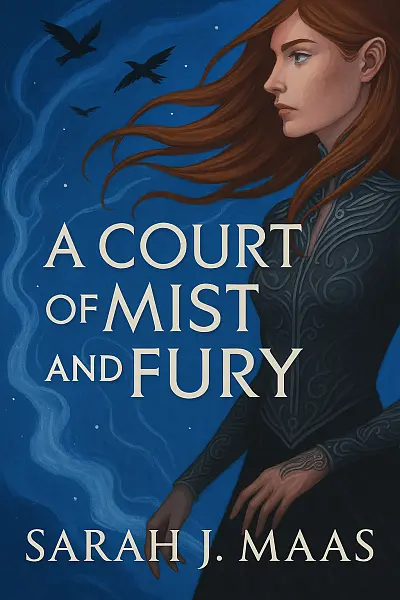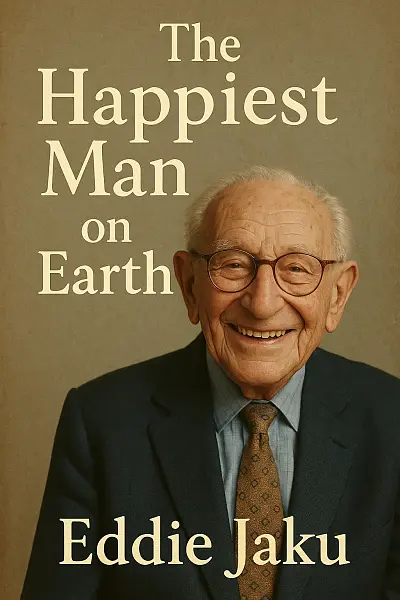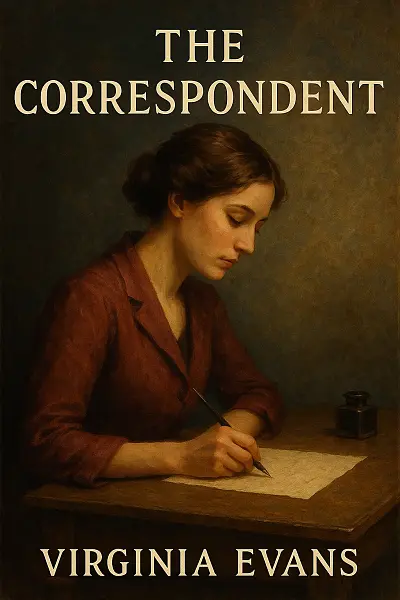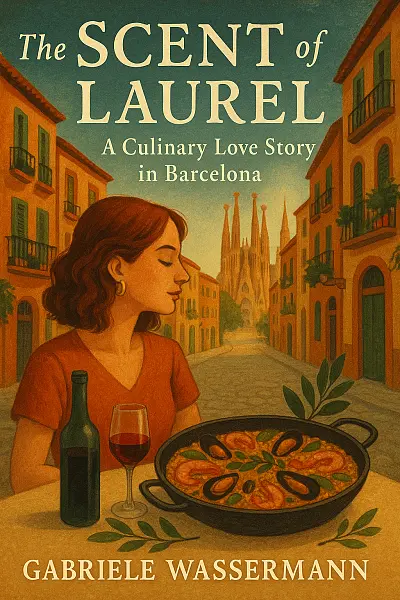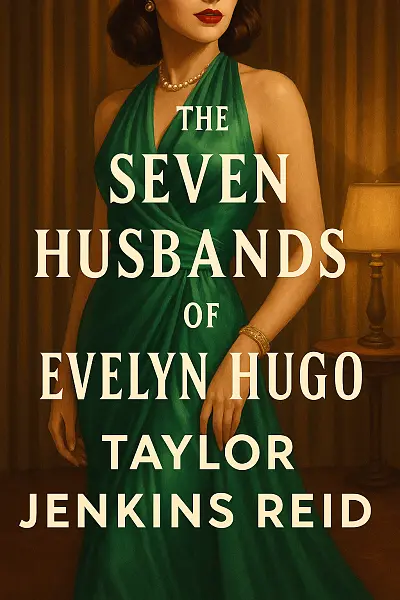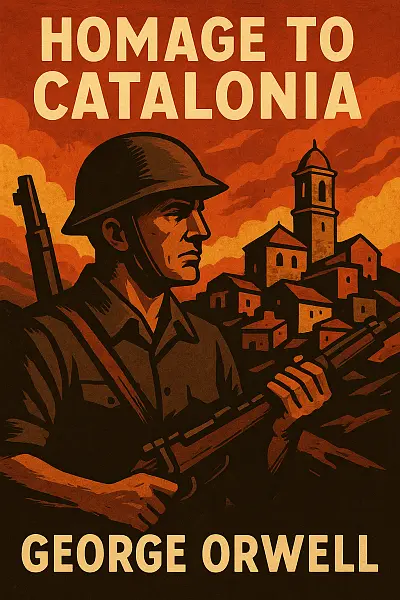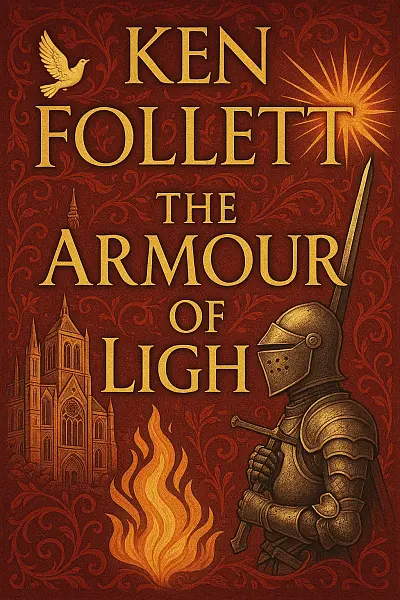
The Armour of Light
by: Ken Follett
Sal Clitheroe scrapes by as a spinner in bustling Kingsbridge, her dreams dimmed by grueling mill work and the city’s hum of unrest. When new, perilous machinery replaces jobs overnight, Sal, her inventive son Kit, and steadfast weaver David Shoveller find themselves thrown into the whirlwind of a society on the brink.
As industrial progress accelerates and revolution brews across Europe, their quest for dignity turns into a fierce fight for survival and freedom. In a world threatening to crush the vulnerable, will they have the courage—and unity—to rise up?
Follett’s immersive, fast-paced storytelling throws us straight into the heart of turmoil, pulsing with hope, grit, and relentless tension.
"“When darkness gathers, it is the courage to stand together—not the armour of steel—that keeps the light alive.”"
Literary Analysis
Writing Style
Atmosphere
Sweeping, immersive, and full-bodied — Follett paints a rich historical landscape that utterly draws you in. The mood boasts grand, bustling cities and smoky, candlelit interiors. There’s an omnipresent sense of gravitas, with tension simmering between moments of quiet human connection and grim, world-altering conflicts. Expect that feeling of being thrust right into the beating heart of the 18th century, with all its turbulence and changing tides.
Prose Style
Direct yet evocative — Follett’s writing is clear and cinematic, never frilly but peppered with just enough detail to create vivid scenes. Dialogue pulses with energy and authenticity, while the narrative flows in measured, confident strides. Don’t expect flowery or experimental flourishes; instead, the prose is sturdy, accessible, and intent on transporting the reader through action and intrigue. There’s a workmanlike quality that gets the job done and gets you hooked.
Pacing
Purposeful and steady — The novel unfolds with deliberate momentum. Follett takes his time laying the groundwork, building up personal dramas alongside sweeping historical developments. Major events crash in like thunderclaps, but quieter moments of introspection are given room to breathe. The pacing never feels rushed, but it also doesn’t dawdle unnecessarily—think of a steam train gathering speed, pausing just long enough to let passengers catch up before surging forward again.
Character Development
Multi-layered and empathetic — Characters aren’t just cogs in the historical machine; they’re fleshed-out individuals, grappling with ambition, loyalty, and moral complexity. Follett skillfully balances an ensemble cast, granting each figure a distinct arc and personality. Readers will find themselves attached not only to the heroes but also intrigued by the motivations of lesser and even morally ambiguous players.
Dialogue
Naturally robust — Conversations feel authentic, sometimes carrying the weight of historical context or class tension, other times sparking with wit or heartbreak. Follett deftly avoids melodrama, letting the stakes emerge from character motivations and lived experience rather than heavy-handed exposition.
Theme & Tone
Big, compelling questions hover over everything — expect explorations of justice, industry, personal freedom, and the push-and-pull between progress and tradition. The tone balances hope with a raw, unflinching look at the cost of change. It never veers into cynicism or sentimentality, aiming instead for honest, thought-provoking storytelling.
Overall Rhythm & Feel
If you’re after a layered historical epic with robust world-building, meticulous attention to period detail, and characters you’ll root for (and sometimes rail against), The Armour of Light promises a hefty, rewarding ride. Follett’s style is like a long, candlelit march through history: steady, immersive, and hard to put down once you’ve started.
Key Takeaways
- Epic factory riot scene throws every character into chaos
- Rebellion and revolution pulse through the smoky, code-breaking towns
- Davron’s fierce idealism butts heads with brutal aristocratic power
- Tense romance complicates loyalties in an age of upheaval
- Towering cathedrals meet weaving looms—history and industry collide
- Follett’s crackling dialogue makes even quiet moments hum with tension
- The “Armour of Light” emerges as both hope and heartbreak in a world set ablaze
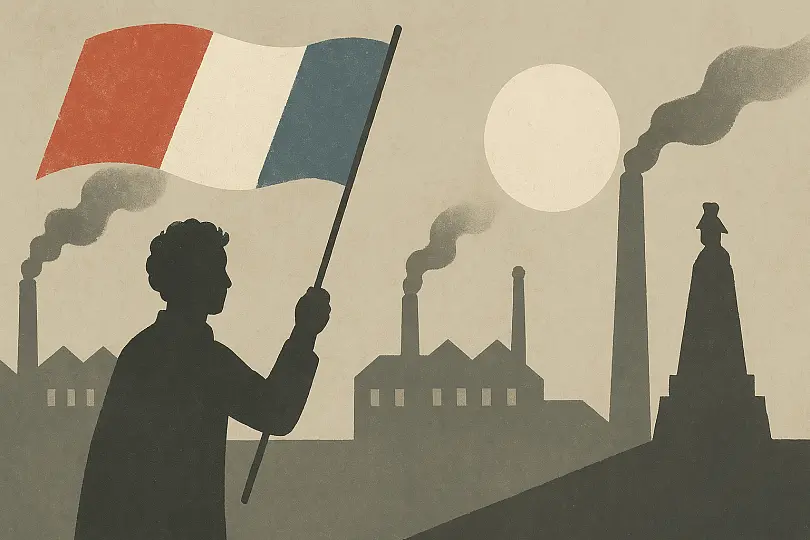
Faith and power collide in an epic saga of revolution and resilience
Reader Insights
Who Should Read This
If you love sweeping historical epics packed with drama, politics, and those juicy “how-did-people-really-live-back-then?” details, The Armour of Light is totally your jam. Ken Follett fans will instantly feel at home—he really goes all-in on the multi-generational sagas and interconnected storylines, so if that’s your thing, you’ll be hooked.
- Big fan of chunky books you can really sink into? This is a doorstopper in the best possible way, so if you crave a story you can get lost in for weeks, you’ll be happy.
- If you’re into complex historical settings (think: cotton mills, social upheaval, and evolving technology in the 18th and 19th centuries), you’ll love how Follett paints this world—he doesn’t skimp on the gritty realism or fascinating side stories.
- Character-driven readers will eat up the sprawling cast. There’s a ton of character development, overlapping fates, and plenty of drama.
BUT—let’s be real:
- If you want fast-paced action or can’t stand a slow burn, you might get impatient with the long build-up and detailed backgrounds.
- Folks who get overwhelmed by lots of characters and constant switching between storylines may find it a bit much—Follett juggles a huge ensemble and he takes his time giving everyone their due.
- If you like your historical novels short and sweet, or focus more on romance or personal relationships over big-picture politics and industry, this one might not be your cup of tea.
In short:
If you’re a history buff, love sprawling family dramas, and get pumped about big, ambitious novels, absolutely give this a go. If you prefer snappier stories or lighter reads, maybe try something else instead—you won’t hurt Follett’s feelings, promise!
Story Overview
Set in the sweeping landscape of late 18th-century England, The Armour of Light plunges you into a world on the brink of industrial upheaval and political unrest.
You’ll follow an unforgettable cast of ordinary people—mill workers, inventors, and visionaries—each fighting for their dreams and survival as tradition clashes with seismic change.
If you love epic tales packed with danger, hope, and the spirit of resistance, this multi-layered saga delivers gripping drama, high stakes, and the kind of historical depth that makes the past feel vividly alive.
Main Characters
-
Sal Clitheroe: A determined young woman and laborer whose struggle for justice and personal freedom is central to the story's emotional drive. Her resilience and evolving sense of agency shape much of the book's social tension.
-
David Shoveller: A passionate, idealistic weaver who becomes a leader in the fight for workers’ rights. His vision and courage push him into dangerous activism, making him a rallying figure for change.
-
Kit Cobden: The owner's son, torn between his family’s interests and his moral awakening. His inner conflict between privilege and empathy adds major complexity to the plot.
-
Earl Snead: The ruthless local industrialist who fiercely opposes any social reform. His ambition and manipulative nature make him a formidable antagonist and a symbol of entrenched power.
-
Hiram York: The pragmatic, morally ambiguous magistrate whose loyalties sometimes shift. He’s pivotal in mediating Turmoil between classes and challenging the ideals of justice in the town.
If You Loved This Book
If The Pillars of the Earth swept you away with its sprawling historical drama and soaring cathedral ambitions, The Armour of Light will absolutely reignite that same passion for intricate world-building and the lives seamlessly woven across generations. There’s something reminiscent here, too, of Hilary Mantel’s Wolf Hall—not just in the meticulously researched period detail but in the way Follett renders political intrigue and shifting loyalties with characters driven by ambition, doubt, and resilience.
On the screen side, fans of Downton Abbey will find themselves at home amid the layered family dynamics, class struggles, and the inexorable march of social change echoing through every corner of the story. Follett’s newest entry pulses with that same blend of personal and societal upheaval, immersing you in a world where the stakes are deeply personal yet profoundly historical.
Expert Review
What happens when the gears of history threaten to grind ordinary lives into dust?
The Armour of Light invites readers to consider how individual courage and collective resilience emerge amid accelerating change. Follett’s new Kingsbridge tale asks us to confront whether progress is always humane, and whose sacrifices grease the wheels of empires.
Follett’s prose is, as ever, unshowy but immersive. He orchestrates a sprawling ensemble with the deft hand of a master storyteller—each chapter propels us forward, weaving multiple destinies with clockwork precision. The narrative technique is classic Follett: alternating perspectives keep tension simmering, while brisk pacing sweeps us from desperate factory floor to storied battlefields without whiplash. Characters like Sal Clitheroe and her son Kit jump off the page, their internal struggles painted in careful strokes—never melodramatic, always relatable. The dialogue is crisp, capturing grit and wit without veering into cliché. Follett’s language isn’t lyrical, but its clarity sustains momentum, ensuring the historical complexity never overwhelms the personal stakes. He seeds the text with evocative period detail—a turn of phrase, a whirring spindle, the clang of revolt—that reminds us history is both lived and survived.
At its heart, The Armour of Light burns with questions of power, justice, and human dignity. Follett examines how technological progress, for all its promise, can alienate and destroy, thrusting the vulnerable into the jaws of exploitation. The workers’ struggle captures universal anxieties about obsolescence—a theme as urgent today as in 1792. Tyranny—both state and industrial—plays villain, but Follett resists simplistic binaries: his antagonists are flawed products of their own pressures. The novel asks, What do we owe each other across lines of class, family, and ideology? Enlightenment ideals collide with the messy, bloody reality of revolution, forcing each character—and reader—to confront what freedom and justice truly mean. There’s a clear sympathy for modern readers facing tumult, making the book resonate as much as a mirror as a window. Industrialization, the threat (and promise) of automation, the slow armoring of the spirit against endless injustice—these aren’t distant concerns.
Within the grand tradition of the historical epic, Follett’s new Kingsbridge entry stands tall, if conventional. He marshals research and passion reminiscent of Hilary Mantel or Bernard Cornwell, but leans more on accessibility and forward motion than on radical literary technique. Relative to earlier Kingsbridge novels, this one feels especially timely, foregrounding social upheaval and the contested ethics of “progress.” Fans of the series will find familiar strengths—an ensemble cast, high stakes, and that signature addictive readability—while new readers receive a fully realized world without homework.
The Armour of Light is not flawless—some passages feel didactic, and a few plot arcs resolve a bit too neatly. Yet Follett’s relentless humanity sparkles through. This is more than a riveting read: it’s a lasting meditation on how ordinary people, in extraordinary times, become the true architects of history.
Community Reviews
I almost put it down during that brutal confrontation in the mill, but something about Sal’s stubborn hope pulled me in. Follett made me care when I was ready to walk away.
I honestly couldn't sleep after that scene with Amos—his desperation just crawled into my dreams and wouldn't leave. Follett really knows how to make you care, even when you didn't mean to.
at first i honestly wanted to put the book down, but then the way Sal Clitheroe faced her impossible choices pulled me back in. couldn't stop thinking about her even after i finished.
I CAN'T STOP THINKING ABOUT SAL, THAT RELENTLESS DRIVE DESPITE ALL THE ODDS. FOLLETT REALLY KNOWS HOW TO MAKE A CHARACTER STICK TO YOUR BRAIN LIKE GLUE.
i was NOT ready for the way Sal Clitheroe kept popping into my thoughts after I closed the book. her strength just lingers, you know? couldn't shake her off, even in the quietest moments.
Cultural Context & Discussion
Local Perspective
Ken Follett's The Armour of Light really hits home with readers here thanks to its deep dive into class struggles, power shifts, and resilience during rapid social change.
- The parallels to our own history are hard to miss:
- The aftermath of industrialization and its explosive effect on local workers echoes our 19th-century labor movements and clashes between tradition and modernity.
- The fight for worker’s rights and dignity in the story calls to mind our own national debates over economic justice and social equity.
It’s fascinating how Follett’s champions of change resemble the bold figures from our own historical narratives, making their victories (and losses) feel incredibly personal. Cultural values around solidarity, pride in communal progress, and skepticism of unchecked authority all get a nod—though some might find Follett’s individualism at odds with our more collective ethos.
- Plot moments involving family sacrifice and risk-taking can hit especially hard, since family loyalty and self-sacrifice rank so high on local values.
Ultimately, Follett is both echoing beloved themes from our literature—struggle against injustice, underdog victories—while also pushing against our tradition by focusing on personal agency over collective action. That balance sparks lively discussion, making this book a standout read locally!
Points of Discussion
Notable Achievement:
The Armour of Light by Ken Follett made a splash upon release, rapidly landing on bestseller lists and cementing Follett's reputation for epic historical fiction—many fans and critics praised its sweeping scope and compelling characters, making it a top choice for both long-time followers and newcomers to the "Kingsbridge" series.
